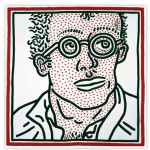HIV-related stigma is worse than ever. Not the external kind, where a society is panicked about the new plague. The days of being shunned by hospital orderlies or funeral homes are over. I knew how to fight the external kind. Today’s internal stigma, where a community shuns its own, is seemingly intractable and far more destructive.
It breaks my heart that the worst of HIV stigma comes from my own community: gay men. It wasn’t always this way. I felt the opposite of stigma when I publicly disclosed my status in the late 1980s. Gay men with HIV received communal love and support. Once safer sex was entrenched, even sexual shunning became rare. Maybe it was our numbers. Maybe it was that many of us couldn’t hide it. Maybe it was our communal fighting back.
Regardless of the reasons, we felt like one community. I realize this viewis skewed. I lived where social norms were heavily influenced by ACT UP and other community responses. The beginnings of gay-on-gay HIV-related stigma could be found in other places back then. But now it seems to be the norm, regardless of location.
Now that people can take pills and hide it, and now that we’ve had at least one generation of gay men who never witnessed AIDS, the sense that we’re all living with HIV is long gone. A culture of safer sex, where you always presume the person you’re sleeping with is positive, has been replaced with a culture of barebacking, where risk is magically reduced by deeply flawed attempts at serosorting. The flaws are hidden because HIV is now hidden.
The result is a vicious cycle where HIV-related stigma leads to more HIV, while hiding its damage by instilling fear and shame in the newly infected. Their resulting silence makes HIV seem rare and avoidable, giving space for the next generation’s stigma. Activists have tried to break this cycle for years, to seemingly little effect. Countless ad campaigns, online and otherwise, have fallen on deaf ears.
Can anything be done to change this sad status quo? Given our now-entrenched state of AIDS fatigue, I’m beginning to think the war on HIV stigma is lost. By all means, let’s keep fighting it, if only to keep it from getting worse. But here’s the important thing: We can still win the war against HIV.
All it takes are concerted public health interventions and the money to fund them. We have the tools to reduce HIV incidence (“treatment as prevention,” or TasP; flattening the “treatment cascade”; pre-exposure prophylaxis, or PrEP; etc.); we just have to apply them. Some localities are proving this. Washington, DC, launched an all-hands-on-deck effort in 2006 with promising results. New HIV cases have dropped 46 percent since 2007. By all accounts, HIV-related stigma is still alive and well in our nation’s capital, but they’ve worked around it.
We need to plow through the continued apathy, ignorance and stigma. While the gay men who moralize and finger wag will most definitely slow us down, AIDS activists and our public health allies will ultimately win this war. So if you’re fighting the good fight and getting any stigmatizing pushback, then push ahead even harder. Give a good smack to that finger in your face, ignore the moralizing idiots online, and find strength from your allies in this fight. And know this: When this crisis is finally over, there will be two kinds of people remembered—those who fought to end it, and those who slowed us down.
The New War
Peter Staley is a longtime activist and the founder of AIDSmeds. Here is an edited excerpt from his recent blog post “Gay-on-Gay Shaming: The New HIV War” on the divisive effect of stigma related to the virus among gay men.






Comments
Comments